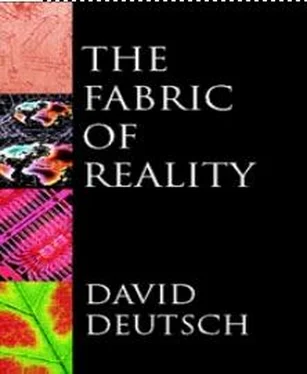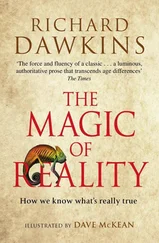David Deutch - The Fabric of Reality
Здесь есть возможность читать онлайн «David Deutch - The Fabric of Reality» весь текст электронной книги совершенно бесплатно (целиком полную версию без сокращений). В некоторых случаях можно слушать аудио, скачать через торрент в формате fb2 и присутствует краткое содержание. ISBN: , Жанр: Физика, Философия, на английском языке. Описание произведения, (предисловие) а так же отзывы посетителей доступны на портале библиотеки ЛибКат.
- Название:The Fabric of Reality
- Автор:
- Жанр:
- Год:неизвестен
- ISBN:0-7139-9061-9
- Рейтинг книги:4 / 5. Голосов: 2
-
Избранное:Добавить в избранное
- Отзывы:
-
Ваша оценка:
- 80
- 1
- 2
- 3
- 4
- 5
The Fabric of Reality: краткое содержание, описание и аннотация
Предлагаем к чтению аннотацию, описание, краткое содержание или предисловие (зависит от того, что написал сам автор книги «The Fabric of Reality»). Если вы не нашли необходимую информацию о книге — напишите в комментариях, мы постараемся отыскать её.
The Fabric of Reality — читать онлайн бесплатно полную книгу (весь текст) целиком
Ниже представлен текст книги, разбитый по страницам. Система сохранения места последней прочитанной страницы, позволяет с удобством читать онлайн бесплатно книгу «The Fabric of Reality», без необходимости каждый раз заново искать на чём Вы остановились. Поставьте закладку, и сможете в любой момент перейти на страницу, на которой закончили чтение.
Интервал:
Закладка:
So, whatever causes interference behaves like light. It is found everywhere in the light beam and nowhere outside it. It is reflected, transmitted or blocked by whatever reflects, transmits or blocks light. You may be wondering why I am labouring this point. Surely it is obvious that it is light; that is, what interferes with photons from each slit is photons from the other slits. But you may be inclined to doubt the obvious after the next experiment, the denouement of the series.
What should we expect to happen when these experiments are performed with only one photon at a time? For instance, suppose that our torch is moved so far away that only one photon per day is falling on the screen. What will our frog, observing from the screen, see? If it is true that what interferes with each photon is other photons, then shouldn’t the interference be lessened when the photons are very sparse? Should it not cease altogether when there is only one photon passing through the apparatus at any one time? We might still expect penumbras, since a photon might be capable of changing course when passing through a slit (perhaps by striking a glancing blow at the edge). But what we surely could not observe is any place on the screen, such as X, that receives photons when two slits are open, but which goes dark when two more are opened.
Yet that is exactly what we do observe. However sparse the photons are, the shadow pattern remains the same. Even when the experiment is done with one photon at a time, none of them is ever observed to arrive at X when all four slits are open. Yet we need only close two slits for the flickering at X to resume.
Could it be that the photon splits into fragments which, after passing through the slits, change course and recombine? We can rule that possibility out too. If, again, we fire one photon through the apparatus, but use four detectors, one at each slit, then at most one of them ever registers anything. Since in such an experiment we never observe two of the detectors going off at once, we can tell that the entities that they detect are not splitting up.
So, if the photons do not split into fragments, and are not being deflected by other photons, what does deflect them? When a single photon at a time is passing through the apparatus, what can be coming through the other slits to interfere with it?
Let us take stock. We have found that when one photon passes through this apparatus,
it passes through one of the slits, and then something interferes with it, deflecting it in a way that depends on what other slits are open;
the interfering entities have passed through some of the other slits;
the interfering entities behave exactly like photons …
… except that they cannot be seen.
I shall now start calling the interfering entities ‘photons’. That is what they are, though for the moment it does appear that photons come in two sorts, which I shall temporarily call tangible photons and shadow photons. Tangible photons are the ones we can see, or detect with instruments, whereas the shadow photons are intangible (invisible) — detectable only indirectly through their interference effects on the tangible photons. (Later, we shall see that there is no intrinsic difference between tangible and shadow photons: each photon is tangible in one universe and intangible in all the other parallel universes — but I anticipate.) What we have inferred so far is only that each tangible photon has an accompanying retinue of shadow photons, and that when a photon passes through one of our four slits, some shadow photons pass through the other three slits. Since different interference patterns appear when we cut slits at other places in the screen, provided that they are within the beam, shadow photons must be arriving all over the illuminated part of the screen whenever a tangible photon arrives. Therefore there are many more shadow photons than tangible ones. How many? Experiments cannot put an upper bound on the number, but they do set a rough lower bound. In a laboratory the largest area that we could conveniently illuminate with a laser might be about a square metre, and the smallest manageable size for the holes might be about a thousandth of a millimetre. So there are about 10 12(one trillion) possible hole-locations on the screen. Therefore there must be at least a trillion shadow photons accompanying each tangible one.
Thus we have inferred the existence of a seething, prodigiously complicated, hidden world of shadow photons. They travel at the speed of light, bounce off mirrors, are refracted by lenses, and are stopped by opaque barriers or filters of the wrong colour. Yet they do not trigger even the most sensitive detectors. The only thing in the universe that a shadow photon can be observed to affect is the tangible photon that it accompanies. That is the phenomenon of interference. Shadow photons would go entirely unnoticed were it not for this phenomenon and the strange patterns of shadows by which we observe it.
Interference is not a special property of photons alone. Quantum theory predicts, and experiment confirms, that it occurs for every sort of particle. So there must be hosts of shadow neutrons accompanying every tangible neutron, hosts of shadow electrons accompanying every electron, and so on. Each of these shadow particles is detectable only indirectly, through its interference with the motion of its tangible counterpart.
It follows that reality is a much bigger thing than it seems, and most of it is invisible. The objects and events that we and our instruments can directly observe are the merest tip of the iceberg.
Now, tangible particles have a property that entitles us to call them, collectively, a universe. This is simply their defining property of being tangible, that is, of interacting with each other, and hence of being directly detectable by instruments and sense organs made of other tangible particles. Because of the phenomenon of interference, they are not wholly partitioned off from the rest of reality (that is, from the shadow particles). If they were, we should never have discovered that there is more to reality than tangible particles. But to a good approximation they do resemble the universe that we see around us in everyday life, and the universe referred to in classical (pre-quantum) physics.
For similar reasons, we might think of calling the shadow particles, collectively, a parallel universe, for they too are affected by tangible particles only through interference phenomena. But we can do better than that. For it turns out that shadow particles are partitioned among themselves in exactly the same way as the universe of tangible particles is partitioned from them. In other words, they do not form a single, homogeneous parallel universe vastly larger than the tangible one, but rather a huge number of parallel universes, each similar in composition to the tangible one, and each obeying the same laws of physics, but differing in that the particles are in different positions in each universe.
A remark about terminology. The word ‘universe’ has traditionally been used to mean ‘the whole of physical reality’. In that sense there can be at most one universe. We could stick to that definition, and say that the entity we have been accustomed to calling ‘the universe’ — namely, all the directly perceptible matter and energy around us, and the surrounding space — is not the whole universe after all, but only a small portion of it. Then we should have to invent a new name for that small, tangible portion. But most physicists prefer to carry on using the word ‘universe’ to denote the same entity that it has always denoted, even though that entity now turns out to be only a small part of physical reality. A new word, multiverse, has been coined to denote physical reality as a whole.
Читать дальшеИнтервал:
Закладка:
Похожие книги на «The Fabric of Reality»
Представляем Вашему вниманию похожие книги на «The Fabric of Reality» списком для выбора. Мы отобрали схожую по названию и смыслу литературу в надежде предоставить читателям больше вариантов отыскать новые, интересные, ещё непрочитанные произведения.
Обсуждение, отзывы о книге «The Fabric of Reality» и просто собственные мнения читателей. Оставьте ваши комментарии, напишите, что Вы думаете о произведении, его смысле или главных героях. Укажите что конкретно понравилось, а что нет, и почему Вы так считаете.












